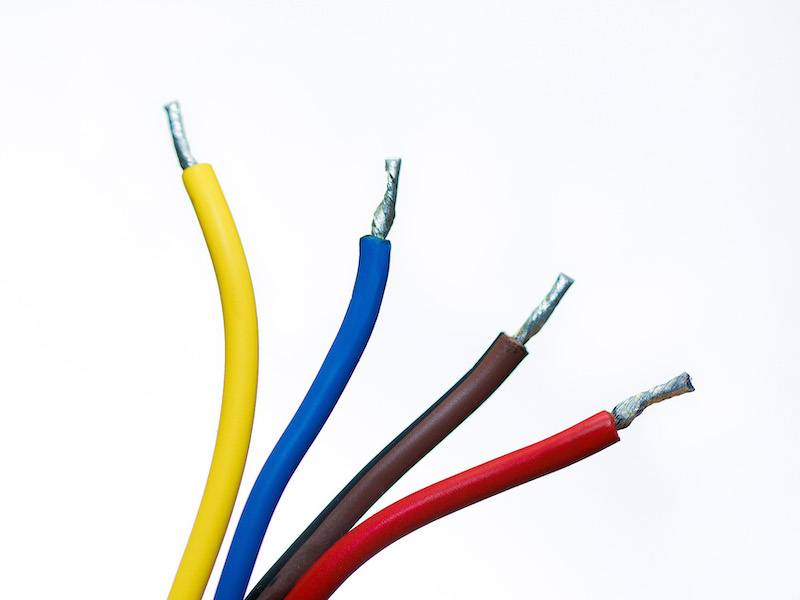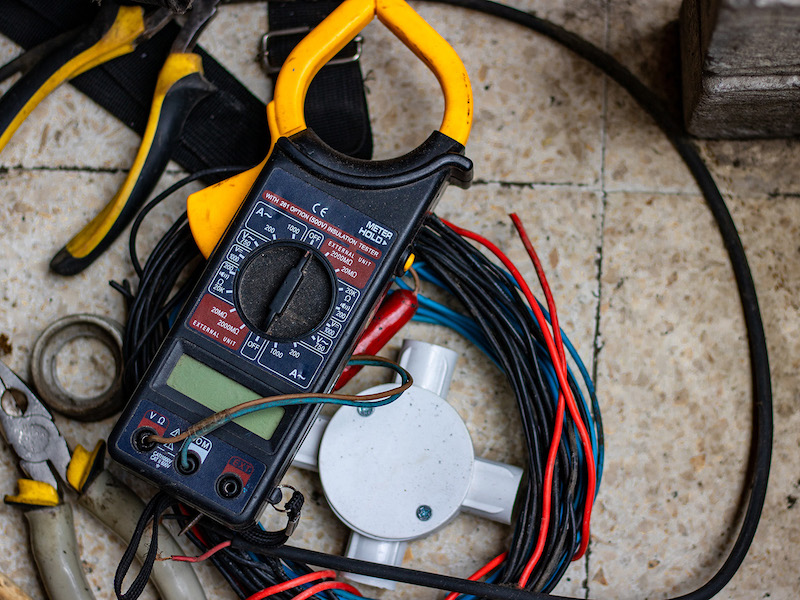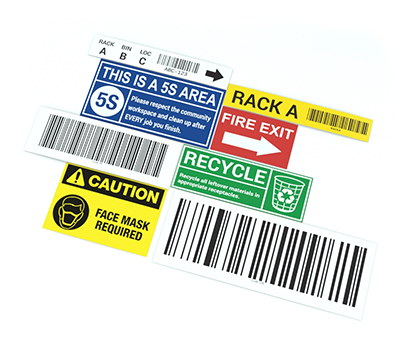

What's The Difference Between A Positive, Ground And Neutral Wire?
Have you ever unscrewed the cover plates of an outlet only to get more confused with an array of colors like red, yellow, blue, or green? Before you begin to poke around your electrical system, it’s best to understand what each wire means and how to handle it safely.
In this guide, we’ll explore the function and potential of the live, earth, and neutral wires, as well as how to maintain electrical safety while working with them.
The Hot Powerhouse: The Live Wire
Simply put, the live wire is the one that is responsible for carrying the current. Hence, the term “live” or “hot” means that it’s electrified with a current that is directly provided by the electrical panel. A live wire is necessary to complete the inner mechanism of any functional electrical system. You can easily identify a live wire due to its stark black color that stands out from the rest.
Function: A live wire is typically known for its high voltage capacity, as it’s mainly responsible for carrying the alternating current, where the flow of electricity abruptly changes at a frequency of 50 to 60 cycles per second. This flow of electricity in different directions ensures that electricity is supplied in different areas of the building.
Hazards: Despite its pivotal role in powering lives, the live or positive wire is known for its extreme risks due to its high voltage nature. Accidental contact can lead to severe shock burns or high-intensity electrical shock which can be fatally injurious. It’s best to leave the work to a professional if you are not equipped to handle the electrical task with expertise.
The Path To Safety: The Ground Wire
The ground wire, also known as the earth wire, is the safety line present in electrical systems. Ground wires act as a pathway for fault or excessive currents to flow back safely to the ground, thereby eliminating the risk of electrical hazards.
Function: Under normal circumstances, the ground wire has no electrical current. However, in the event of a malfunction where the electrical current strays from its intended path, the ground wire will act as an alternative path for the current to flow back to the ground.
Hazards: The entire purpose of the grounding wire is to act as a safety mechanism, so unless you touch the grounding wire during a ground fault- there are no hazards associated with it.
The Final Puzzle Piece: The Neutral Wire
Completing the puzzle of wires is the neutral wire which acts as a bridge between the live and earth wire.
Function: It’s designed to carry the current back to the source once it has passed through the appliance. The neutral wire offers stability and ensures there is constant equilibrium on both sides as it has zero potential, which is commonly used as a reference point for voltage measurements.
Hazards: The presence of a neutral wire is highly essential, as it goes beyond just completing the circuit but rather provides stability between the positive and neutral wires. It provides equilibrium to maintain the electrical load, ensuring that the current will flow evenly between the live and neutral wires.
Now that we’ve evaluated an understanding of the basics of an electrical circuit, we can move onto how they differ from one another.
Difference Between Live And Neutral Wires
The difference between a positive and neutral wire depends on the type of electrical system and the role of each wire in the circuit. In general, a positive wire is a current-carrying conductor that delivers power to a load, while a neutral wire is a return path for the unused current back to the source. Let's take a closer look.
Appearance
The color of the wire insulation or sheathing is often used as a visual indicator of the wire’s role in the circuit. However, the color codes may vary by region, type of system, and age of installation. Therefore, it is important to verify the actual function of the wire before making any connections or modifications. Here are some common color codes for positive and neutral wires:
- For direct current (DC) power, such as from batteries or solar panels, the red wire is usually positive and the black wire is usually negative. The white wire (if present) is usually ground or earth, which is sometimes called neutral in DC systems.
- For alternating current (AC) power, such as from utility grids or generators, the black wire is usually the phase 1 hot wire, which means it’s positive. The red wire is usually a phase 2 hot wire, which can also be positive or negative depending on the phase angle. The white wire is usually neutral, which means it has zero or near-zero potential with respect to ground. The green or bare copper wire is usually ground or earth, which provides a safety connection to divert excess current in case of a fault.
- For flexible armored cable (BX or MC), which is a factory-made cable with a metal jacket protecting individual wires inside, the black wire is usually positive and the white wire is usually neutral. However, in some cases, such as for 220-volt appliances like water heaters or well pumps, the white wire may be repurposed as a second positive wire and marked with red or orange tape or paint to indicate its new function.
- For knob-and-tube wiring, which is an old method of wiring that uses porcelain knobs and tubes to support and protect individual wires running through stud and joist cavities, there is no standard color code for positive and neutral wires. The wires may be black, white, or any other color depending on the manufacturer. Therefore, it is essential to test the wires with a voltage tester or multimeter to determine their polarity and potential.

What is Each Wire's Function?
The function of the wire is its role in delivering or returning current in the circuit. The function of the wire may depend on its connection to the source, load, switch, or ground.
- Positive Wire: A positive wire is a current-carrying conductor that delivers power to a load from a source. A load is any device that consumes electrical energy, such as a light bulb, a motor, or a heater. A source is any device that produces electrical energy, such as a battery, a generator, or an outlet. A positive wire may be connected to one terminal of a source (such as the positive terminal of a battery), one terminal of a load (such as the hot terminal of an outlet), one side of a switch (such as the input side of a light switch), or any combination of these.
- Neutral Wire: A neutral wire is a return path for the unused current back to the source. A neutral wire may be connected to another terminal of a source (such as the negative terminal of a battery), another terminal of a load (such as the neutral terminal of an outlet), another side of a switch (such as the output side of a light switch), or any combination of these. A neutral wire may also be connected to ground or earth at some point in the circuit to provide a reference point for potential and safety.
What is the Potential of a Wire?
The potential of the wire is its voltage level with respect to ground or earth. The potential of the wire may vary depending on the type and magnitude of the voltage supplied by the source.
- Positive Wire: A positive wire has a higher potential than ground or earth. This means that it has more electrical pressure or force to push current through the circuit. The potential difference between a positive wire and ground or earth is what drives current flow in the circuit. The potential difference may be constant or varying depending on whether the source provides DC or AC power.
- Neutral Wire: A neutral wire has zero or near-zero potential with respect to ground or earth. This means that it has no electrical pressure or force to push current through the circuit. The potential difference between a neutral wire and ground or earth is negligible or zero. Therefore, there is no current flow between a neutral wire and ground or earth under normal conditions. However, if there is a fault or imbalance in the circuit, such as a short circuit or an overload, the neutral wire may carry excess current back to the source or to ground or earth to prevent damage or fire.
Additional Wire facts:
- The difference between a positive and neutral wire depends on the type of power being used. For DC power, the positive wire is usually red and the negative wire is usually black. For AC power, the positive wire is usually black and the neutral wire is usually white. Source: https://www.wikihow.com/Identify-Positive-and-Negative-Wires
- The positive wire carries the electrical current from the power source to the load, while the neutral wire returns the current back to the source. The neutral wire is also connected to the earth ground, which provides a path for excess current to flow in case of a short circuit or a surge. https://www.crazyengineers.com/threads/what-is-the-concept-of-live-and-neutral-wires.33835
- The positive and neutral wires have different voltages and potentials. The positive wire has a higher voltage than the neutral wire, which means it has more electrical pressure. The neutral wire has the same voltage as the earth ground, which means it has zero potential. Source: https://toolsweek.com/how-to-tell-positive-and-negative-wires-on-light-fixture/
- The positive and neutral wires have different functions and safety implications. The positive wire delivers power to the device or appliance, while the neutral wire completes the circuit and balances the load. The positive wire can cause electric shock or fire if touched or damaged, while the neutral wire is usually safe to touch unless there is a fault in the system. Source: https://www.nj.gov/dca/divisions/dhcr/offices/docs/wap/Electrical%20Safety%20Foundation%20International%20%28ESFi%29%20Electrical%20Safety%20Workbook.pdf
- The positive and neutral wires have different color codes and standards in different countries and regions. For example, in the US, the positive wire is black, red, or blue, and the neutral wire is white or gray. In the UK, the positive wire is brown, and the neutral wire is blue. In Australia, the positive wire is red, and the neutral wire is black. Source: https://www.hgtv.com/how-to/home-improvement/how-to-identify-wiring-in-an-electrical-outlet
Similar Questions
- What does the neutral wire do?
- How are neutral wires identified?
- What is the Color of the Ground Wire?
- What is the gray wire color used for?
- Is the black wire the hot wire?
- What are ground wires?
- What is neutral wire color?
- What does it mean to ground a wire?
- What is a phase wire?

